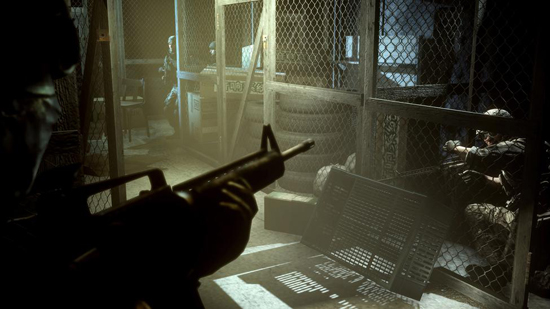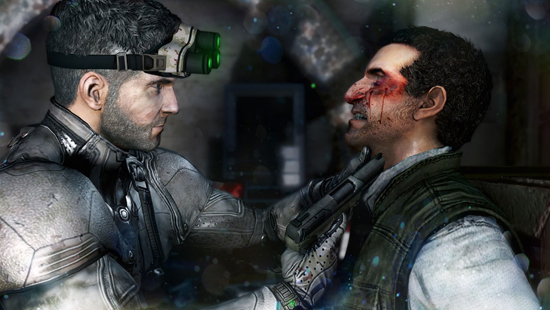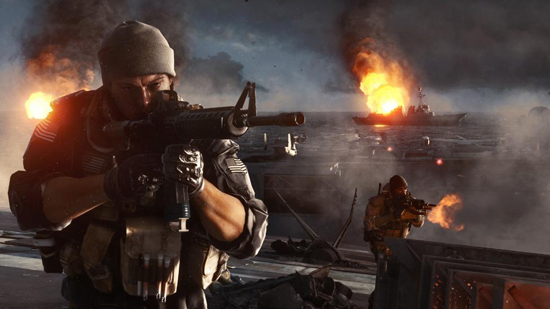Over the last decade suspense-driven storylines that play off of real-world events or contingencies have become the in vogue setting. After years of exploring World War II, games across a slew of genres centered around military men and machine began to branch out into an area explored mostly through literature.
However, games with a plot based on contemporary international diplomacy and it’s relationship with the covert world of espionage and the armies of the world is nothing new. They have been around as long as the medium has, though they have matured since the days of 8 and 16 bit graphics. Some of them may come as quite a surprise as well. Now bankrolling a cool billion a title off of the Call of Duty franchise, Activision developed and released Spycraft: The Great Game ages ago for the PC back in 1996; I still have it, it was a great game driven by a strong and suspenseful narrative that played out as a Tom Clancy read.

Since then, games with similar motifs have found a healthy home in first-person-shooters and real-time strategies. Dating back to 1998, Clancy bridged his beloved geopolitical thriller narrative into video games with Rainbow Six. Now, 15 years later; seven Rainbow Six titles have been released to date, another 14 titles between Clancy’s other franchises, Splinter Cell and Ghost Recon have released along with stand-alone real-time strategy title EndWar. The Command and Conquer franchise spawned the Red Alert series in 1996 the latest of which, Red Alert 3 released in 2008; these games explored an armed conflict between Allied powers and the Soviets such as the current day Wargame series. Not only have these titles proven successful as games, they have proven that the geopolitical narrative works in games.
But as other developers and publishers begin to release games that follow similar narratives, is the setting benefiting or harming games?

As an experience video games have the unique potential to offer more than the sum total of their collective stimuli. Action side-scrollers offered a sense of accomplishment because you were championing both a level-scape you had to successfully navigate and the pattern of bad guys between you and victory; you also had to master the controller and your own physical movements along with developing your hand-eye coordination. That seems like a full plate experience, but one that only speaks to half of you; unless the game had a story that compelled an emotional intrigue or response. When a game provides that full of an experience, provoking physiological accomplishment while captivating you emotionally, you have a great game on your hands.
As a form of entertainment, games ought offer a plethora of stimuli as it adds to the overall experience. Adding layers of intrigue and suspense into the storyline of a game provide consistent routes for delivering such an experience. When done well, suspenseful shifts in plot dynamic encourage gamers to further explore the depths of the story and setting, giving your experience a zest of adventure. Those moments are some of the most powerful in a game, frequently being the most memorable as they can suddenly revitalize your own sense of enjoyment or curiosity.

Unfortunately the narrative is not perfect for video games, as the industry from the top-down tends to reflect each other’s successes in the settings they choose to put their games in. Call of Duty and Battlefield have both fallen prey to the practice; once the two most beloved World War II shooter franchises have left the 1940’s behind chasing more cinematic and thrilling nouveau storylines while bombastically fragmenting gameplay with cut-scenes and heavily exaggerated situations. The end result for many triple A titles that play off Clancy’s cards being the victim of outrageous contingencies or borrowed and butchered dynamics and plot twists.
Considering that in today’s geopolitical world the best villain for a suspense thriller is a terrorist, you know who you’re fighting against before you pick up next Call of Duty or Battlefield. Though the terrorist may have new clothes, a diverse ethnicity, a unique personal motive, or a different means of destruction; the political motifs and threats are recurring amongst these games many being borrowed from previous titles in other franchises. They even share the same backdrop and diplomatic cast of characters; the peripheral areas of the Russian Federation, the Caucasus, the Middle East, China, and the West as an entity commonly involving NATO. A regurgitation of a Cold War mentality kept simmering by aged cold warriors and those writing video game storylines inspired by those times and what possibilities that might have.

Plot devices that can hang suspense in stasis have also been poorly employed. The most frequent of which is the threat of a nuclear explosion. Combining a recurring terrorist antagonist to the story only seeks to make it stale before it’s even played out. As an aspect of meta-game, you know there is an end condition, you also know you will eventually reach that end condition; if the antagonist seeks to use nukes the end condition is you removing that possibility. However, the Call of Duty and Battlefield franchises jumped that shark. In Modern Warfare a nuke is detonated by a terrorist while being assault by a large U.S. force killing 30,000 marines which provides the catalyst for General Shepherd going rogue in the next title Modern Warfare 2; seeking revenge for the fallen marines Shepherd attempts to influence latter events by provoking and prolonging a war between the U.S. and Russia through the ultranationalist Russian terrorist Makarov. In Battlefield 3, while playing as a Russian GRU operative in Paris, one of the nukes you were tasked with obtaining in detonated. A key component to the suspense of that story removed, yet the story marches on at a diminished effect.
Though the geopolitical suspense narrative works well in games, attempts to add conflicting layers of suspense for a greater immerse experience has been the greatest harm to games at large. By crafting highly dramatized suspense-thriller storylines for a game, game developers are prefabricating a cinematic experience for gamers. Rather than delivering games that can be fully explored, they deliver games that are played through as if taking an active role in a movie; sidelining the gamer periodically throughout moments of action. That notion of sidelining furthermore extends into the outcome of your play-through; as certain events are scripted to occur statically, your own decisions ultimately have less influence or effect on the game’s outcome restricting the overall experience. It is a passenger’s experience that is being driven by the people that wrote the game, rather than those playing it.
